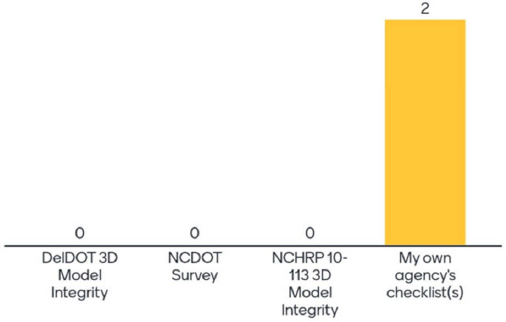Quality Management for Digital Model–Based Project Development and Delivery (2025)
Chapter: APPENDIX F: TASK 8 METHODOLOGY REVIEW FEEDBACK
APPENDIX F. TASK 8 METHODOLOGY REVIEW FEEDBACK
Participants were provided with a survey to capture feedback on testing the methodology proposed by the research team. A summary of the questions and responses is presented below:
-
What is your role or what are your general responsibilities at your agency?
- Previously a Designer, now a Project Manager
- Designer
- Project Manager
- I am a bridge design engineer specialized in BIM. In some of the pilot projects, I am working with the bridge designer to implement The BIM Uses defined in BEP (BIM Execution Plan).
- Designer, Project Manager, Digital Delivery Specialist
- Designer
- Bridge Designer
-
Which agency do you represent?
- Utah DOT
- Utah DOT
- CalTrans
- Kimely-Horn – supporting UDOT, ADOT, and TxDOT
- Kimely-horn & UDOT
- CalTrans
- Which review type does your agency CURRENTLY HAVE a policy or procedure for?

- Which review types is your agency DEVELOPING a policy or procedure for?

- Which disciplines were included in the model you used to test the procedures?

- Which reviews did you test?
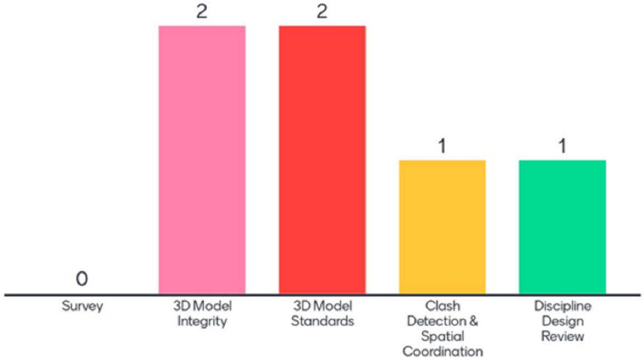
- Regarding the testing packet, please indicate your reaction to these statements.
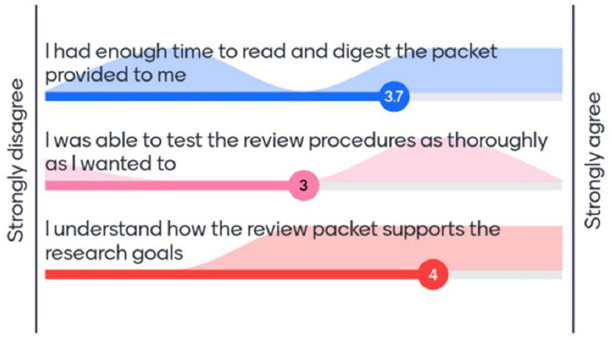
- To what extent do you agree with these statements about CONSISTENCY of reviews?
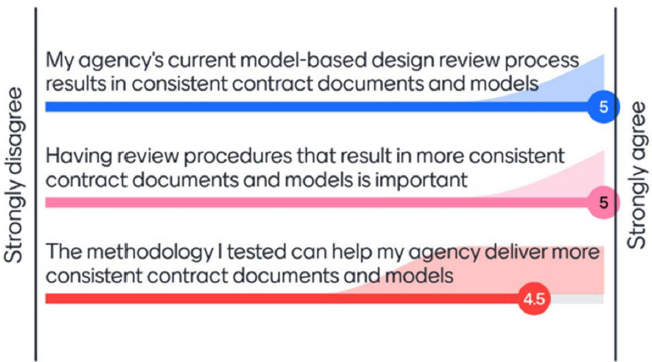
- To what extent do you agree with these statements about REPEATABILITY of reviews?
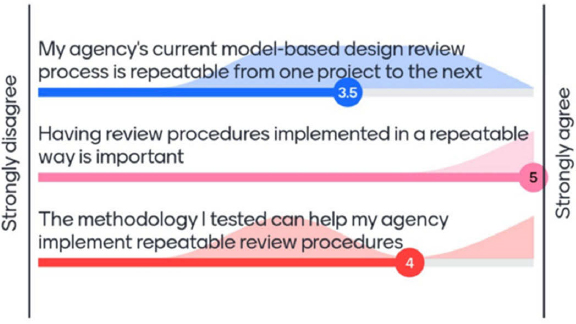
- To what extent do you agree with these statements about the REPRODUCIBILITY of reviews?
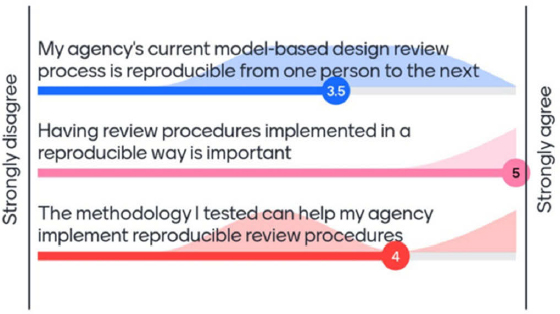
- To what extent do you agree with these statements about the TRACEABILITY of reviews?

-
What other attributes of review procedures do you believe are important?
- Version control – the ability to track what has been reviewed and what still needs to be reviewed; the ability to compare one milestone to the next; the ability to verify the final version.
- Methods for review and how the review is documented. Each DOT will do this differently, but guidance is preferred.
- Simplicity-Structured-Documentation and Record Keeping of Model QA/QC – QA/QC Procedures Fit within ISO 9001 Framework.
- To what extent do you agree with these statements about the 3D Model Integrity Review?
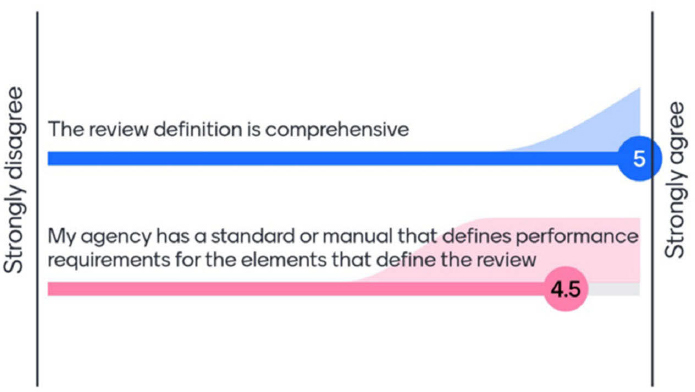
-
Please provide any constructive feedback regarding the 3D Model Integrity review definition.
- In my experience, the 3D Model Integrity Review would take place with the 3D Modeling Standards Review (LOD and LOIN) or within the Discipline Design Review. Consider Combing for simplicity.
- To what extent do you agree with these statements about 3D Model Standards Review?
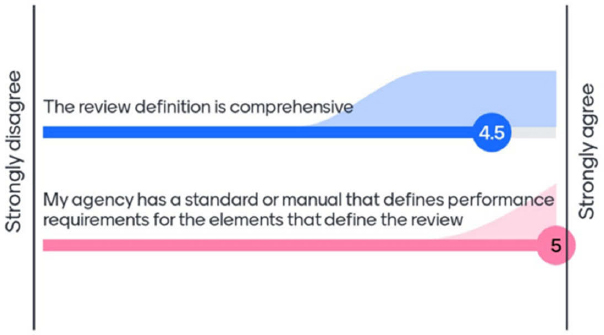
-
Please provide any constructive feedback regarding the 3D Model Standards review definition.
- Metadata definition is also used to define POIN attributes in Utah. Consider using ‘File Metadata.’
- To what extent do you agree with these statements about the Clash Detection and Spatial Coordination Review?
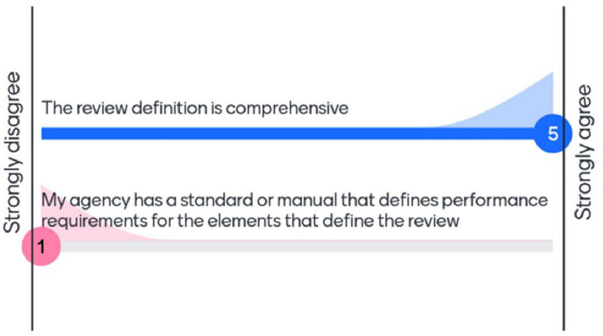
-
Please provide any additional feedback regarding the Clash Detection and Spatial Coordination review definition.
- Utah does have standards for Sight Distance. Both of these review cases are done in the Discipline Design Review.
- To what extent do you agree with these statements about the Discipline Design Review?

- To what extent do you agree with these statements about the 7-step process?

- To what extent do you agree with these statements about the review scope and documents lists?

- To what extent do you agree with these statements about the review scope and documents lists?
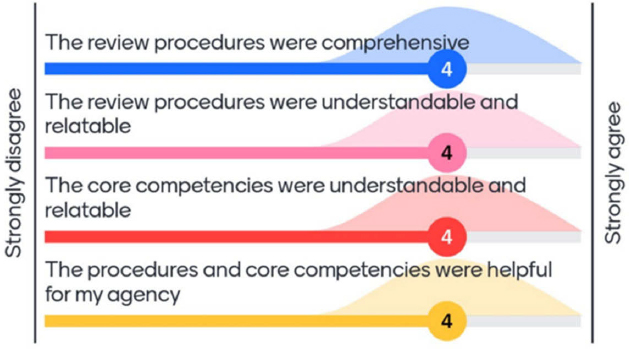
- Which of the following job aids did you use?

- To what extent do you agree with these statements about the supplied job aids?

- Did you use the Model Element Table?
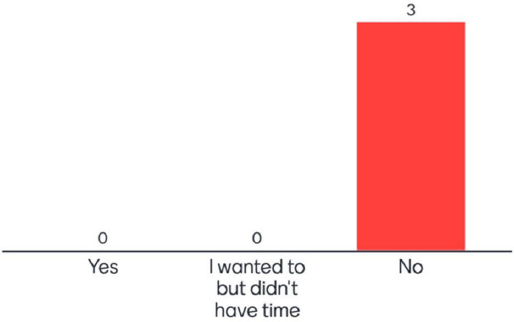
- Which checklist did you use?
